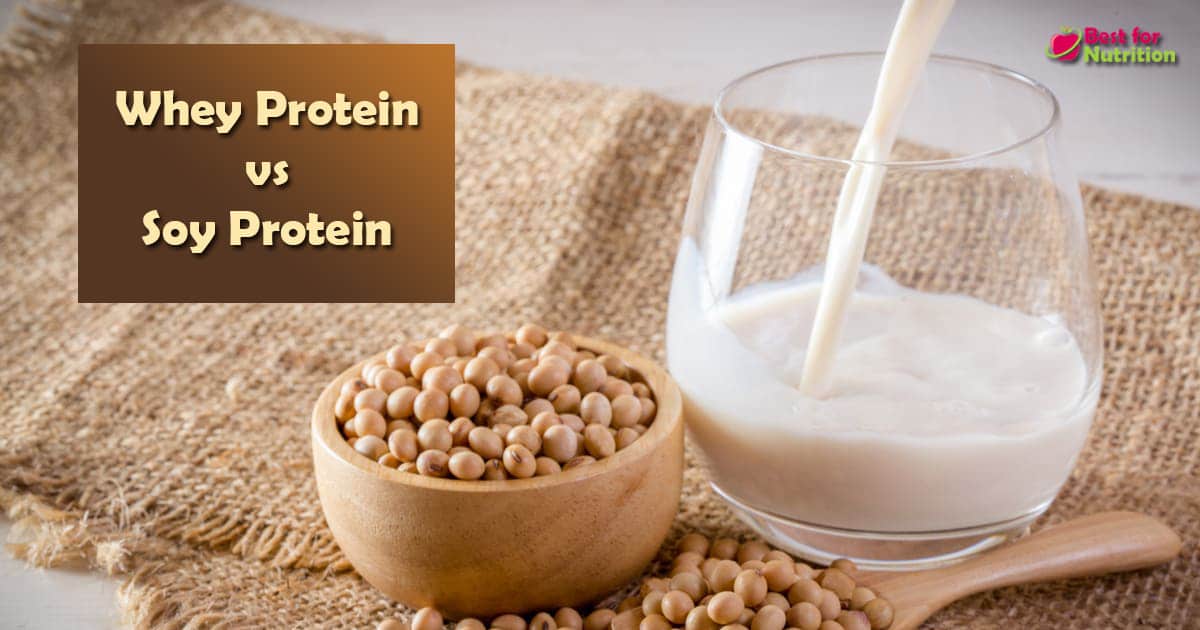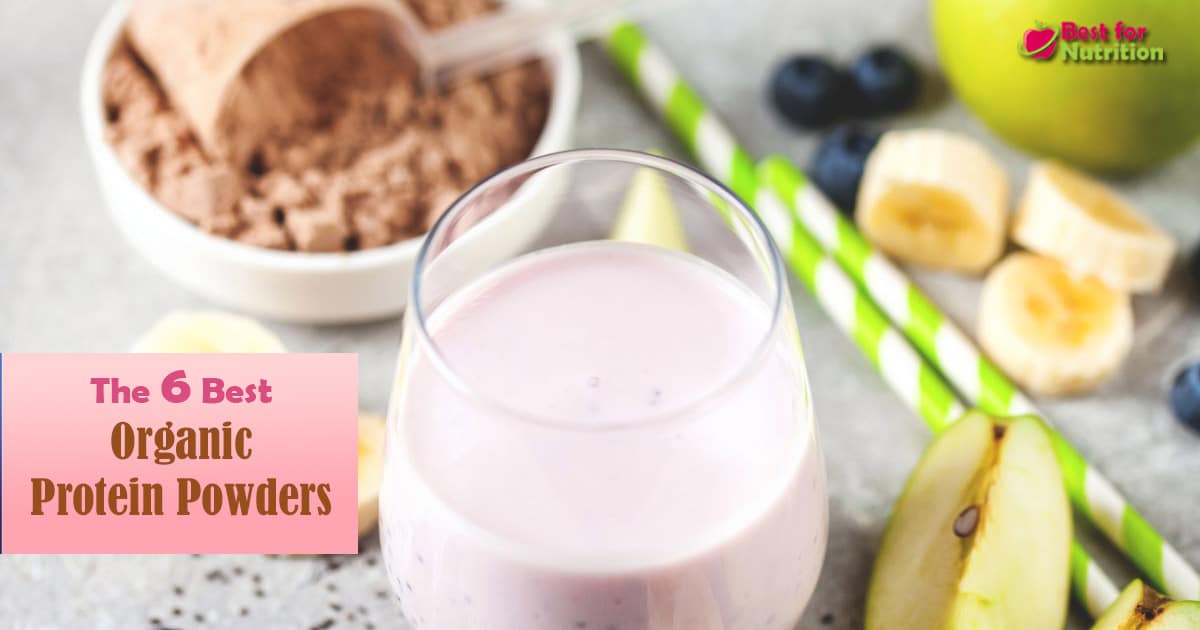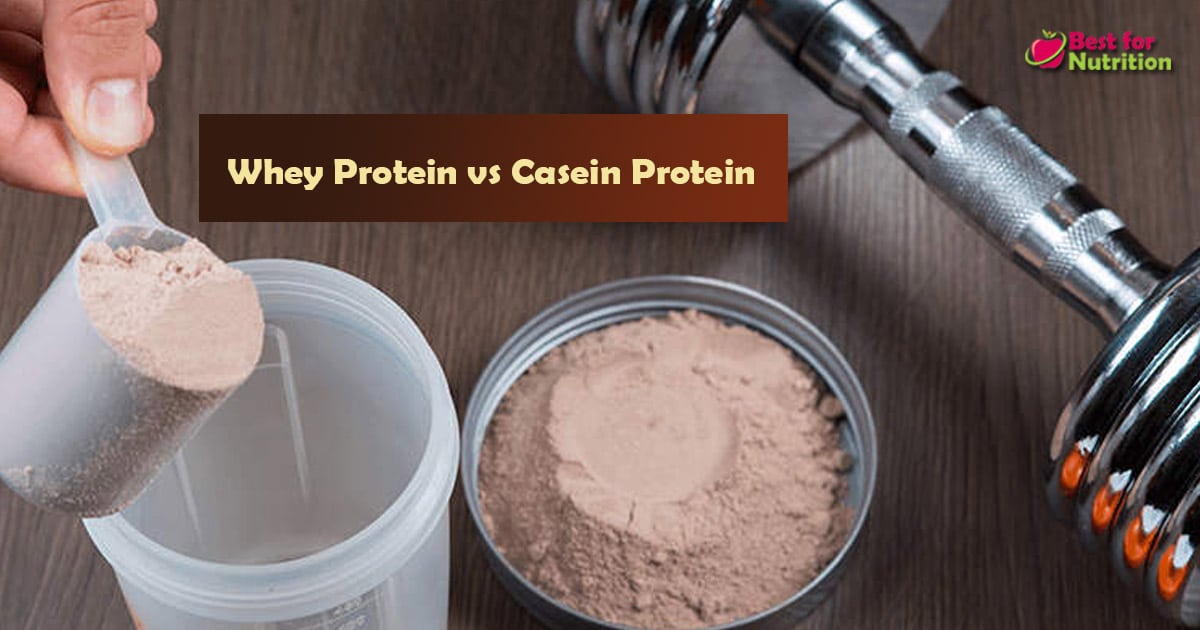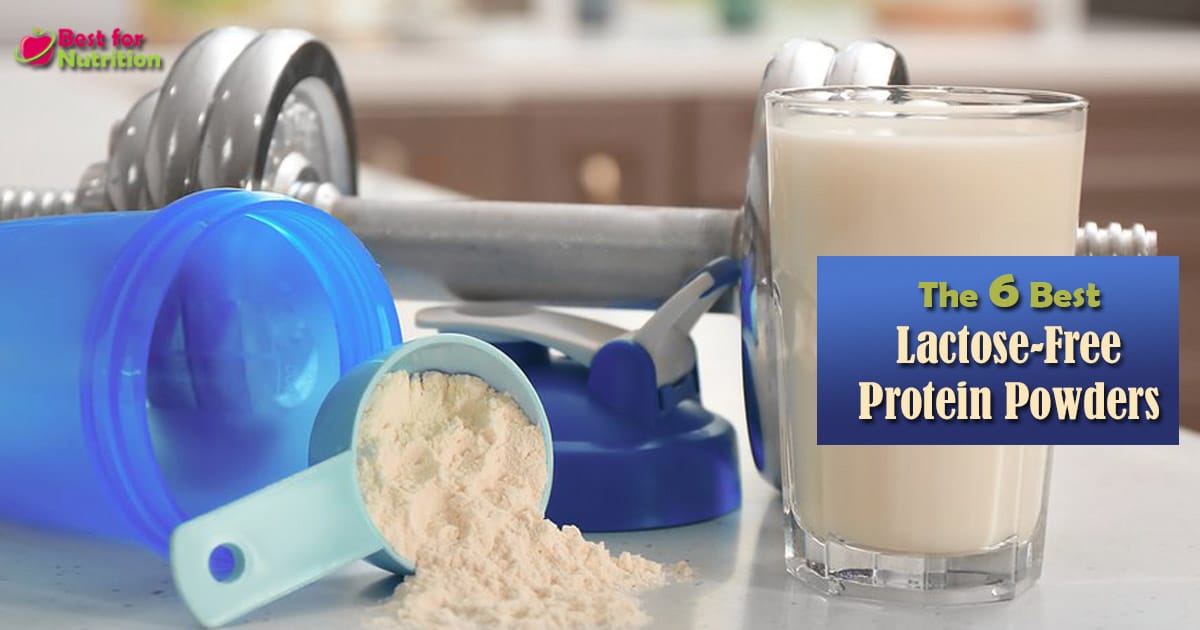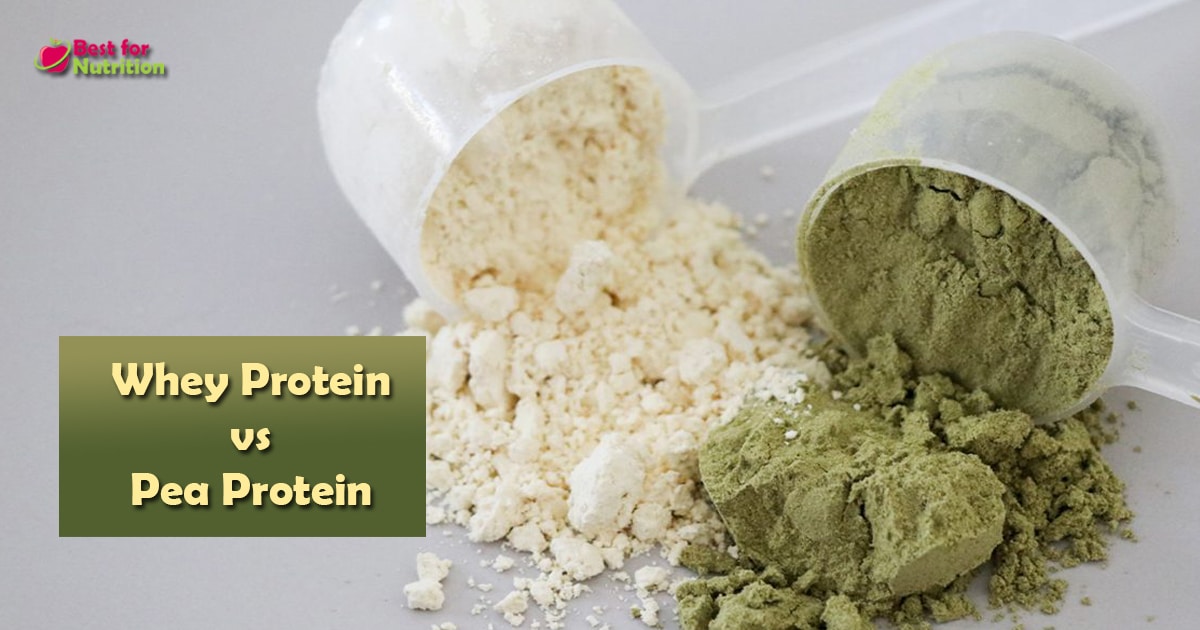Adding protein powder to your morning coffee or breakfast porridge is a quick way to meet your daily protein requirements.
Proteins help to produce healthy nails, hair, and skin. It also reduces age-related muscle loss (1).
They regulate blood sugar, reduce food cravings, and increase metabolism, thus promoting weight loss (2), (3).
This article deals with everything right from how you can mix your protein shake to what exactly you can mix your protein powder with to hit the right note.
Here’s our list of tried and tested ideas that are not just delicious, but also quick and easy.
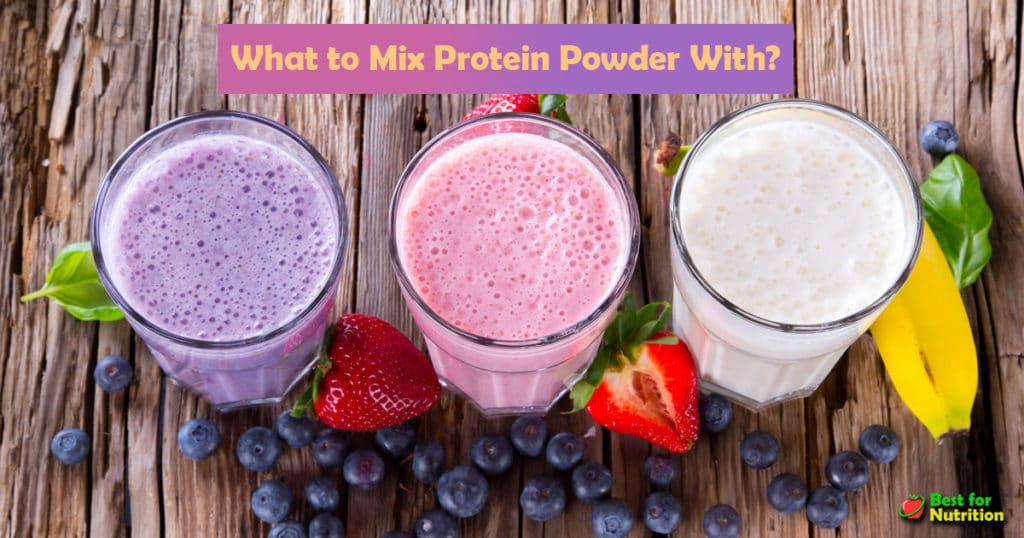
How to Mix Protein Powder
There are no set rules when it comes to combining protein powders with other ingredients. It is about discovering what works for you and what helps you reach your goals for a healthy lifestyle.
But irrespective of what you choose to mix it with, here are some basic tips for making a smooth, lump-less, creamy protein drink.
Sift The Powder
Given time, protein powder tends to clump up in the storage container itself. Shake the container and sift the powder with a fork or spoon to break them up before mixing.
This ensures that each grain of powder has a better chance of dissolving in the mix rather than sticking together to form gooey lumps in your drink.
Make a Slurry
Another way, to avoid clumps, is to make a slurry by adding a small amount of the liquid into the powder and stirring it to make a sludge. This can then be added to the remainder of the liquid.
Shaker Bottle
A shaker bottle is used to mix up the protein shakes. It has a ball or propellor shaped whisk called an agitator inside the bottle to ensure that everything mixes well. This is a convenient way to mix protein powder with liquids.
Blender
This is used when you want to mix your protein powder with solid food like bananas, nuts, ice cubes, etc. This will save time and ensure a smooth, creamy protein shake.
There are plenty of blenders available in the market with a variety of offerings like portability, varied portion sizes, etc.
What to Mix Protein Powder with?
The simplest answer to this question would be – Whatever you want!
Protein shakes are a fast and reliable method to ensure a nutritionally charged meal. One of the best things about protein powder is its versatility.
While milk and water seem to be the most common choices, protein powder can also be mixed with a host of other ingredients to create everything from fruit smoothies to delicious protein-packed bakes in no time.
Protein Powder with Water
Water, as mentioned earlier is one of the commonly used liquids for mixing protein powder. It is calorie-free as long as no other ingredients have been added. For lean builders, and those aiming to tone up, this is the way to go.
Water is excellent for hydration purposes and it cleans out your system (4). But this may not suit everyone’s taste as it doesn’t add much in the way of creaminess and will be of very thin consistency.
Summary: Water is the way to go if you’re looking for a calorie-free ingredient. This helps with hydration but may not be the best option for someone wanting a more creamy consistency.
Protein Powder with Milk
If creaminess is what you’re going for, then cow’s milk is what you should mix your protein powder with. Obviously, the higher the fat content in the milk, the creamier the protein shake.
This would be ideal for those trying to build mass and muscle. This is also advantageous to those looking for an increased intake of protein as milk contains proteins along with carbohydrates and fats.
Cow’s milk is also a good source of calcium (5). Just one cup of milk offers one-third of your daily calcium needs. If you are lactose intolerant, you may have to look at other options.
Summary: Milk is the ideal choice for those looking to increase their protein intake as milk comes with its own share of protein. Milk makes your drink creamier than when using water to mix the protein powder.
Protein Powder with Soy Milk
For those following a plant-based diet or are lactose intolerant, soy milk is an alternative. This is higher in calories when compared to cow’s milk and doesn’t offer as much calcium (only 6% of your daily calcium intake)
When buying soy milk, be sure to check if it has any added sugars or other undesirable ingredients such as preservatives.
Men should tread lightly, however. High intake of soy products may cause negative impacts on their body due to their tendency to be estrogen-forming, so practice moderation and include other non-dairy options such as almond milk (6).
Summary: Soy milk is an alternative for those wanting a plant-based diet. It is higher in calories when compared to cow’s milk.
Protein Powder with Almond Milk
Almond milk is a creamier alternative for those who do not want to have the protein powder with water.
This adds to the protein content in the shake and packs in Vitamin E which is also important for healthy hair and skin.
The calorie count is as low as 30 calories per cup if you choose to go with unsweetened almond milk. Make sure to check the sugar content on the product label before buying it.
Summary: Almond milk packs in vitamin E which is great for hair and skin. Unsweetened almond milk contains just 30 calories per cup.
Protein Powder with Coffee
Coffee Lovers can now rejoice because protein powder can be a great addition to your morning pick me up.
Apart from the benefits offered by the proteins, this drink comes with a host of benefits provided by the coffee.
Coffee contains important nutrients like Vitamin B, magnesium, potassium, and plenty of antioxidants. Coffee boosts blood circulation and reduces the risk of developing metabolic syndrome (7).
Mix your protein powder together with a cup of chilled coffee and some ice cubes for a delicious and nutritious concoction of iced coffee. Whipping this in a blender will give you a frothy finish.
Keep in mind that adding protein powder directly to a cup of hot coffee will lead to clumps. To avoid the lumps, first, mix the protein powder with a few spoons of the hot coffee to make a slurry and then add in the rest.
Readymade protein coffee mixes are available in the market for your convenience.
Summary: Protein coffees are a great pick me up. It boosts blood circulation and contains plenty of antioxidants. Readymade protein coffee mixes are available in the market.
Protein Smoothies
A protein smoothie is a great way to get everything you need for your body in one shot – proteins, healthy fats, fruits, veggies, yogurt, etc.
The secret to making a smoothie delicious is to find the right balance between the protein powder and your add-ins.
A great way to make your smoothie is to use one cup of fruit per smoothie. Add some healthy fats like nut butter or chia seeds to this.
You can also toss in a handful of greens such as spinach or kale. Blend them all together till smooth and creamy.
There are tons of recipes online to add to your smoothie repertoire. Try this Strawberry Banana Protein Smoothie, but be sure to know that nothing can beat a classic vanilla banana protein smoothie.
Summary: Protein smoothies are a great way to get all the nutrients you need in one shot. Strike the right balance between the protein powder and your add-ins for that perfect balance.
Protein Powder in Cereal
Adding protein powder to your morning cereal is an easy way to increase protein consumption while consuming a full meal.
The trick is to dissolve the protein powder in milk and then pour it over your cereal. Otherwise, you will end up with a clumpy mess in your cereal bowl.
If cereals are not your thing, you can add the protein powder in yogurt. Add in a little bit at a time, and stir it in.
Summary: Adding protein powder to your cereals is yet another way to incorporate additional proteins into your diet. For best results, the powder must be dissolved in milk first before pouring it over your cereal.
Protein Powder in Oatmeal
Incorporating protein powder to your fiber-rich oatmeal is another convenient way to up your protein intake. Oats contain beta-glucan which is a type of soluble fiber.
Dietary fibers help in slowing digestion, increasing satiety, and suppressing appetite (8). Rolled oats or steel-cut oats are healthier options than the instant oats variety which is highly processed.
Oats are known to reduce cholesterols levels and the risk of heart disease. Studies have also found that regular consumption of oats has an anti-hypertensive effect and reduces blood pressure as well (9).
All this makes oats an ideal choice for mixing your protein powder in and make the potent combo a regular on your breakfast menu.
Wait until the oatmeal is cooked before adding the protein powder. Stir it well. This helps to dissolve the protein powder more quickly.
You can choose to add regular milk or almond milk to modify the consistency to suit your taste.
Summary: Oatmeal contains beta-glucan which contributes to weight loss and this together with protein powder is a perfect wholesome meal.
Baking with Protein Powder
Yet another great way to sneak in protein into your diet is to add protein powder to your cakes, brownies, or cookie batter.
Bear in mind that you cannot go over the top with replacing all your flour with protein powder. You will end up with dry and rubbery food especially if whey or casein protein powder is being used.
As a general rule, protein powder should not make up more than half of your batter. Moistening ingredients like bananas, cooked beets, or apple sauce will also help prevent drying in the baked foods.
Summary: Protein powder can be added to your cake, cookie, or brownie batter. As a thumb rule, proteins should not make up more than half of the batter. This will ensure that your food doesn’t get dry and rubbery.
Protein Bars
Protein bars are an alternative if you are looking for a quick, compact, and nutritious meal on the go. Ingredients vary vastly from oats and quinoa to dried fruits, nuts, and seeds.
Protein bars are usually a good source of other nutrients such as calcium, potassium, and iron depending on the ingredients used.
The nutrition labels should be checked before buying protein bars as they may contain high amounts of sugar and other unhealthy additives.
One way to overcome this is to make protein bars at home. This tried and tested recipe for Triple Chocolate Protein Cake Bars will leave you feeling indulged but healthy.
Summary: Protein bars are a blessing for those on the go. Ingredients vary from dried fruits, nuts, and whole foods like quinoa and oats. Making these at home will ensure that you know exactly what went into that protein bar.
The Final Note
Adding protein powder to your diet is a simple way to meet your daily protein requirements and boost your health.
Protein helps with age-related muscle loss, regulates blood sugar, and increases metabolism rate. They are also needed for healthy hair, nails, and skin.
Protein powders are quite versatile and can be added to your morning cup of coffee or any fruit smoothie. They can be mixed quickly in water, different types of milk, oatmeal, or yogurt.
Protein powder must be sifted before adding it to your drink to prevent lumps. A shaker or a blender makes it easier to mix smooth and creamy drinks.
There are so many ways to enjoy your fix of protein powder that getting enough protein never has to be a chore.
